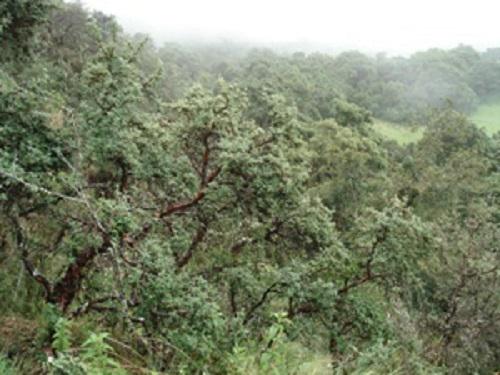Ariel Isaias Ayma Romay
Other projects
30 Jan 2009
Restoration of Bolivian Yunga Cloud Forests with Native Queñua (Polylepis racemosa) and "Pino de Monte" (Podocarpus glomeratus)
7 Jan 2014
Restoration and Management of Queñua (Polylepis racemosa) and Pino de Monte (Podocarpus glomeratus) Woodlands in the Yungas of Independencia, Bolivia II
The aim of the project is to contribute to restoration and management of Queñua (Polylepis racemosa) and Pino de Monte (Podocarpus glomeratus) woodlands in the Yungas of Independencia, Bolivia.

Forest Polylepis Pajchanti.
The cover of the cloud forests with P. glomeratus and P. racemosa has been greatly reduced within the municipality of Independencia. These two species are declining and the IUCN consider that these are vulnerable to extinction. On the one hand, the second project RSG will contribute to creating more environmental awareness of the problems of the forests with emphasis on the population of P. racemosa and P. glomeratus. We will train groups to carry-out native tree reforestation to protect forests, improve practices of forest management and traditional agricultural (by linking different forms of knowledge).
The following activities will be carry-out:
a) Two hundred primary students will have better information, environmental awareness and new abilities to promote conservation. Quickly, they are becoming key actors in the society.
b) 2000 indigenous people will have knowledge and environmental awareness. This helps to develop public opinion with implications in local conservation politics,
c) One environmental education guide on woodlands and threatened wildlife will be printed in 100 copies. The guide will be used by teachers permanently in classrooms,
d) Two workshops will be held for different groups of the community. This will help to communicate experiences towards key actors working with the forest conservation
e) I will continue the evaluation of native tree plantations of the first RSG project. The results will be published in a scientific article in a national magazine.
On the other hand, two indigenous communities (Pajchanti y Salviani, with 90 families) will make decisions and take actions for woodlands management, protection and restoration. The indigenous people will be active throughout the process to conservation of their woodlands. If we achieve participation of the communities is possible that the perceptions, thinking, methods, experiences and decisions on protection, management and restoration, will be understood within the communities. This could have long-term implication for conservation. Communities will protect two hundred hectares (494 acres) of forest with Polylepis and Podocarpus populations and incorporate 300 hectares (741 acres) of forest with improved practices of sustainable use of wood and firewood. They will reforest threatened native trees through planting and sowing seeds (10000 samplings). Incentives will be used to promote conservation, direct actions, and at the same time avoid harmful agriculture practices, deforestation and fires in the forest.